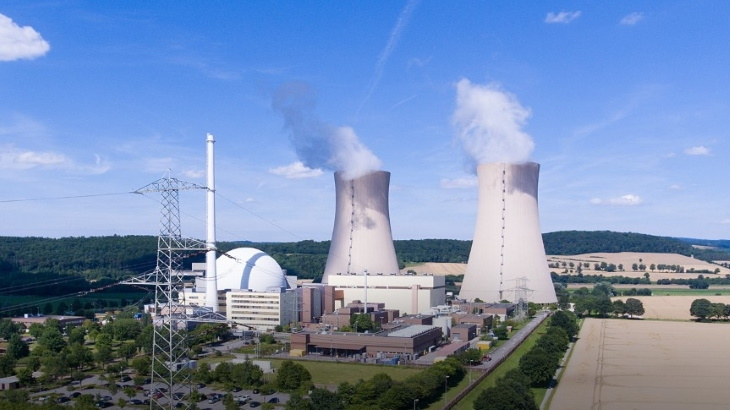
By Anders Lorenzen
A recent report has shed light on the scale of the climate cost of Germany decommissioning its nuclear power plants.
It has indicated that Germany’s early nuclear closure program l mounts up to a cost of one billion tons additional CO2 emissions than if the country had closed coal plants early instead – that would have enabled the country to achieve a net-zero status more easily and save massive additional climate damages.
Costly shutdown
Germany has six remaining nuclear reactors which are due to be closed down next year which will remove a huge source of zero-carbon electricity from the German economy unable to be taken up by other clean energy sources such as solar and wind. If these reactors were kept in operation, a complete exit from coal would be possible by 2028, ten years earlier than Angela Merkel’s government has planned. This would also be in accordance with the court case won by German youth fighting for a safe climate future.
The report also looked at how Europe’s industrial powerhouse could use nuclear energy to alter the waning course of its renewable energy programme Energiwende which many energy analysts have called flawed.
The report; ’The One Billion Tons’ was commissioned by Ökomoderne e.V., which aims to use science so nature can thrive, and executed by Think Atom, a Finland-based not-for-profit research firm. It was published at a critical time ahead of the crucial climate summit COP26, as natural gas prices were spiking, coal plants are running out of stock, and there are ongoing discussions about forming a new German government following September’s general election in which the climate crisis was the main issue. As we recently reported, none of the parties seeking to form the next government is likely to go down the nuclear route.
Climate neutrality is far off
The report also suggests that Germany has not done enough to decarbonise its economy and achieve climate neutrality. It argues that after 20 years and hundreds of billions of euros spent, renewables like wind, solar and biomass still only account for only 20% of energy use. Around 75% comes from fossil fuels: burning coal, natural gas and oil. To meet its own goals, Germany needs to significantly speed up its CO2 reductions which, the report suggests, is only realistic if the nuclear shutdown is abandoned.
Energy analyst Rauli Partanen, lead author of the report and co-author of the pro-nuclear book ‘Climate Gamble’ said: “Given that we need to act very fast and reduce emissions significantly in the 2020s, keeping the currently operating nuclear plants open is the quickest and surest way to do that. It is highly risky and irresponsible towards future generations to try to solve the climate challenge without one of the most capable technologies we have at our disposal.”
The research acknowledges that the refurbishment of the remaining reactors will cost money, it also highlights that the International Energy Agency (IEA) has shown that extending the operation of nuclear reactors is the most cost-effective way to produce low-carbon energy, and recommends that countries maximize their safe usage. For Germany, keeping its nuclear reactors open is one of the cheapest ways to reduce emissions.
Mark Lynas, a leading environmental campaigner in the UK, says the report is another proof of environmentalists across Europe taking an evidence-based approach. This growing movement writes Lynas in the foreword to the report, “puts the joint climate and biodiversity emergency at the top of the priority list, and is not trapped by ideological mindsets fixed in the 1970s.”
Following the 2011 Fukushima incident, Germany sped up its nuclear decommissioning programme, even though no fatalities were reported as a direct result of the nuclear accident.
14 replies »